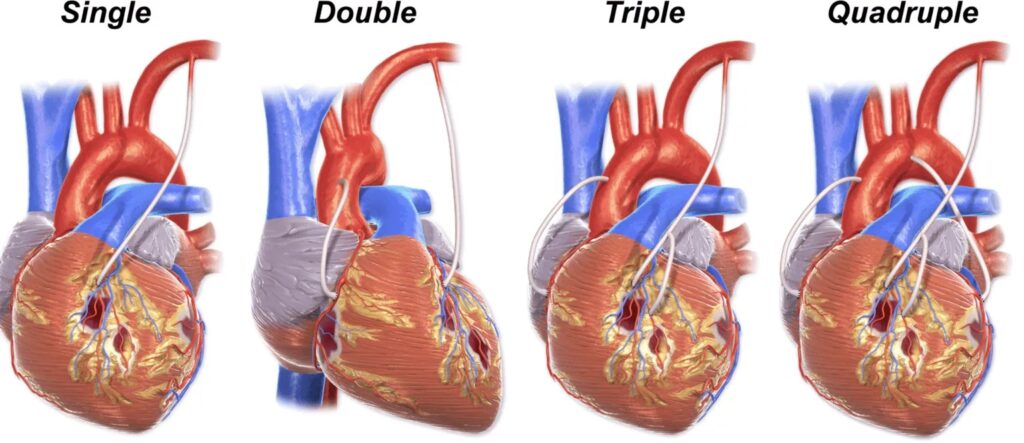Coronary bypass surgery is the most frequently performed heart surgery in the world and in our country. This method, also known as “bypass” for short, is used to treat blockages in the heart vessels. It is especially preferred in cases where the heart muscle cannot be adequately nourished due to coronary artery disease.
Why is Coronary Bypass Surgery Performed?
The dictionary meaning of the word bypass is “bridging”. In medicine, it means deactivating the narrowed or blocked vessel and restoring blood flow with a different vessel. With this method, the blocked vessel area is bypassed, ensuring the heart’s nourishment.
History of Coronary Bypass Surgery
Coronary bypass surgery began to be applied in the late 1960s and was revolutionary in heart surgery. Although the stent method developed in the 1980s facilitated the treatment of coronary artery disease, bypass is still the most effective treatment option, especially for patients with advanced vessel blockage.
Who Should Have Coronary Bypass Surgery?
- Patients with diabetes and widespread vessel blockage
- Patients not suitable for stent application
- Patients who have previously had stents applied but developed re-blockage
How is Coronary Bypass Surgery Performed?
The surgery is usually performed through an incision in the front part of the breastbone. In some patients, surgery can also be performed through small incisions on the side of the chest.
Vessels Used
The following vessels are used for bypass:
- Leg vein (Saphenous vein)
- Arm artery (Radial artery)
- Chest wall artery (Mammary artery)
The vessel taken from the chest wall has the highest rate of long-term patency.
Pre-Surgery Preparation
Planning is essential for a successful surgery. The following steps are applied before surgery:
- Evaluation of heart functions
- Blood tests and lung checks
- Checking for infections in the body
- Regulation of diabetes, blood pressure, and cholesterol levels
Post-Surgery Recovery Process
The hospital stay after surgery is usually 4-5 days. After discharge, an average 2-3 week convalescence period is recommended. During this process, in terms of infection risk:
- Patient visits should be limited
- Hands should be washed before contact with the patient
Things to Consider After Surgery
Coronary bypass surgery does not mean the disease has completely disappeared. The following risk factors should be considered after surgery:
- Smoking should be absolutely quit
- Blood fats and sugar levels should be regulated
- Blood pressure should be kept under control
- Doctor check-ups should not be skipped
- Medications should be used regularly
Success Rate of Coronary Bypass Surgery
The success rate of the surgery is quite high. Especially when performed before a heart attack occurs, before heart functions deteriorate, the results of the surgeries are much more satisfactory. Patients can return to their normal lives shortly after surgery.
📌 Frequently Asked Questions (FAQ)
Is the surgery risky?
As with any surgical procedure, there are risks. However, the success rate of the surgery performed by expert surgeons on suitable patients is quite high.
Do the vessels re-block after surgery?
If risk factors are not controlled, bypassed vessels can become blocked over time. Therefore, lifestyle changes are essential.
When can I return to daily life after surgery?
It is possible to return to work life and daily living within an average of 2-3 weeks after leaving the hospital.
How long does the surgery take?
The duration of the surgery may vary depending on the patient’s condition, but on average, it takes between 3 to 5 hours.
📊 Patient Information Table
| Title | Information |
|---|---|
| Surgery Duration | 3–5 hours |
| Hospital Stay Duration | 4–5 days |
| Recovery Time | 2–3 weeks |
| Vessels Used in Surgery | Leg vein (saphenous vein), arm artery (radial artery), chest wall artery (internal mammary artery) |
| Primary Risk Factor | Risk of infection |
| Postoperative Risk Factors | Smoking, high blood pressure, high cholesterol, diabetes |
| Controls | Regular doctor check-ups and medication use |

